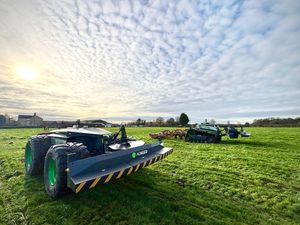Potatoes may be more prone to get bruised
The difficult weather conditions we have experienced this year, where soils have gone from being very dry to very wet, will make tubers more susceptible to bruising, writes Gary Collins.
Assessing your potato crops carefully before harvesting can help to minimise this problem.
Bruising sensitivity depends on a number of factors, including variety, tuber size and shape, age, nutrition, soil type and temperature in addition to dry matter and tuber firmness (turgor). All these factors, and the inaccuracy in measuring them, has made it difficult to predict a crop's potential to damage. The best method is to take a sample, apply a force by dropping sample tubers or subjecting them to force, and measuring the level of bruising and damage.
The wet summer has meant that, in many cases, roots have been in saturated soil and have not been able to function effectively and, in some cases, have died prematurely. As water uptake is restricted, there can be an effect on tuber development and bruising susceptibility. If a tuber is partially dehydrated, it is more likely to bruise.
Correct machinery set-up is also vital. Ideally, samples should be taken from the field before harvesting and put through a damage system like a bruise barrel to test bruise susceptibility. This will help highlight crops most at risk from harvesting and grading damage, allowing you to choose which fields to harvest first. Bruising can vary within fields, so sometimes it is worth leaving an area and returning to it at a later date.
It is also important to continue monitoring throughout harvesting, with any necessary adjustments being made to ensure the least possible damage. Samples should be taken from the harvester and grader at least daily and hot boxed. This will show any issues quickly, allowing for them to be tackled. It is always best to know what damage is going into store, rather than waiting for it to develop naturally, when it is too late to do anything. With harvesters lifting 60 tonnes an hour, a one per cent rise in damage can cost between £600 and £1,000 a day.
Moreover, good planning prior to planting next year will help minimise risks. Don't forget to check areas such as clod and stone removal, correct machinery set-up and tractor wheel size. An area easily overlooked when buying new equipment, is to match track width with existing potato equipment, as the pressure from tyres on the side of ridges can be a major damage point even before harvesting. Following damage reduction best practice during harvesting and grading can help to reduce bruising.
* Technical executive Gary Collins is the Potato Council's bruising specialist





